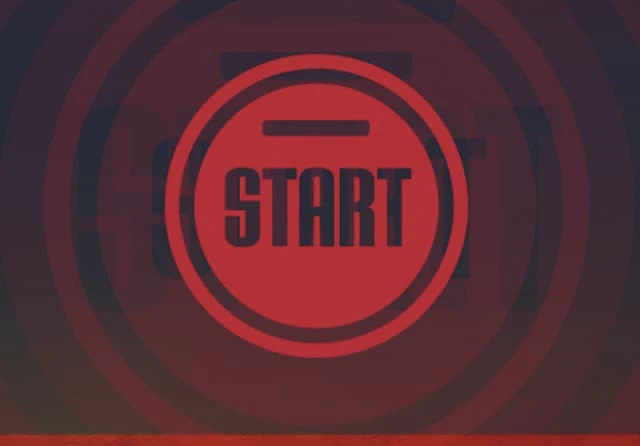
Download Poker

Omaha High/Low is a fantastic poker variant that has captured the attention of many players and become quite popular in recent years. Ignition offers a wide selection of poker tables to suit your playing style, level and budget – including Omaha Hi/Lo. This poker game might be the most action-packed of the three “flop” games available at Ignition.
This guide will cover the fundamentals of Omaha Hi/Lo so you can get a better understanding of the rules, how the game works and bring your poker skills to the next level.
But it's not just about knowledge and skill - choosing the right poker room can also have a big impact on your overall success. Let’s start by understanding the key instructions.
 At first glance, Omaha Hi/Lo may seem quite similar to regular Omaha poker rules. However, there is one key difference that occurs during the showdown:
At first glance, Omaha Hi/Lo may seem quite similar to regular Omaha poker rules. However, there is one key difference that occurs during the showdown:
During the showdown in Omaha High/Low poker, the pot is split into two halves, with one half awarded to the player with the best high hand, and the other half given to the player with the best low hand. If there is no qualifying low hand, the player with the strongest high hand takes the entire pot.
When comparing low hands, the hand with the lowest card combination wins. It's important to note that a player can use any combination of two of their four-hole cards and three of the community cards to make their best high or low hand, adding an extra layer of complexity and strategy.
In the game of Omaha Hi/Lo, high hand refers to the strongest possible combination of five cards. Like mentioned in our basic poker rules handbook - in popular variations such as Texas Hold'em and PLO, the highest possible hand is a royal flush.
Low is the weakest possible combination in the game, and collecting it requires specific conditions:
In Omaha Hi/Lo, a scoop occurs when a player wins both the high and low halves of the pot.
This can happen if a player has the strongest high hand and the best low hand or if all other players have either a weaker high hand or no qualifying low hand. Scooping the pot is considered a significant achievement in Omaha High/Low and can lead to a substantial payout. However, it's important to remember that winning just one half of the pot can also be profitable when playing Omaha Hi/Lo.
Omaha High/Low card values are identical to Pot Limit Omaha and Texas Hold’em, meaning that 2 is the weakest card, while Ace is the strongest. Omaha hand rankings are similar to other poker games with the highest hand winning the pot. However, it's important to think about both high and low combinations when evaluating hands.
The high hand rankings are similar to traditional poker, with the royal flush being the strongest hand. The low hand is unique in that only hands with five cards of eight or lower qualify. The best possible low hand is called the "wheel", which consists of 5-4-3-2-A. It's essential to consider both high and low possibilities when deciding whether to play a hand.
 While all three flop games share most of the same elements of gameplay, there are key differences that make Omaha Hi/Lo stand out.
While all three flop games share most of the same elements of gameplay, there are key differences that make Omaha Hi/Lo stand out.
In Omaha, each player is dealt four-hole cards instead of two. This gives players more options and possibilities to form a winning hand. Additionally, in Hi/Lo, the pot is often split between the highest and lowest hands, which adds another layer of strategy and excitement.
Unlike Texas Hold'em, where players can use any combination of their two-hole cards and the five community cards to form their hand, in Omaha Hi/Lo, players must use exactly two of their hole cards and three of the community cards to make their best hand. This can take some getting used to, but it also means that there are fewer random hands and more opportunities to outplay your opponents with skill and strategy.
In addition, in Omaha Hi/Lo, the pot is split between the highest and lowest hands, while in Texas Hold'em, the entire pot goes to the player with the best hand. This means that players have to consider both high and low possibilities before making their next move.
 Ready to dive into Omaha High-Low Poker? Ignition has a great selection of games with options for different stake levels.
Ready to dive into Omaha High-Low Poker? Ignition has a great selection of games with options for different stake levels.
A standout feature of Ignition is our fast and reliable software, ensuring smooth gameplay. If you prefer to deposit and play with crypto, we offer that option for fast and convenient payments. Plus, the customer support team is available round the clock to assist with any concerns or questions you may have.
You'll love the user-friendly interface and excellent customer support that Ignition provides, guaranteeing an enjoyable and hassle-free experience as you play Omaha High/Low Poker online.
In Omaha High/Low, each player is dealt four hole cards instead of two, and players must use exactly two of their hole cards and three of the community cards to make their best hand. In addition, the pot is split between the highest and lowest hands, adding an extra layer of strategy and excitement.
The rules of Omaha High/Low are similar to regular Omaha poker, with the exception that during the showdown, the pot is split into two halves, with one half awarded to the player with the best high hand and the other half awarded to the player with the best low hand. If there is no qualifying low hand, the player with the strongest high hand takes the entire pot.
A scoop occurs when a player wins both the high and low halves of the pot. This is considered a significant achievement in Omaha High/Low and can lead to a substantial payout.
The weakest possible combination in Omaha High-Low is called a low hand. It cannot have cards higher than an 8, and straights and flushes are not considered. The best possible low hand is A-2-3-4-5, suits are irrelevant for the low hand, and an ace is considered the lowest card in a low combination.
Yes, it is possible for a hand to be both a low and high combination at the same time in Omaha High/Low.
Ignition Casino is an online poker room that offers a wide selection of Omaha High/Low tables, as well as other poker variants. We operate as a fair and secure online gaming platform and cater to players of all skill levels.